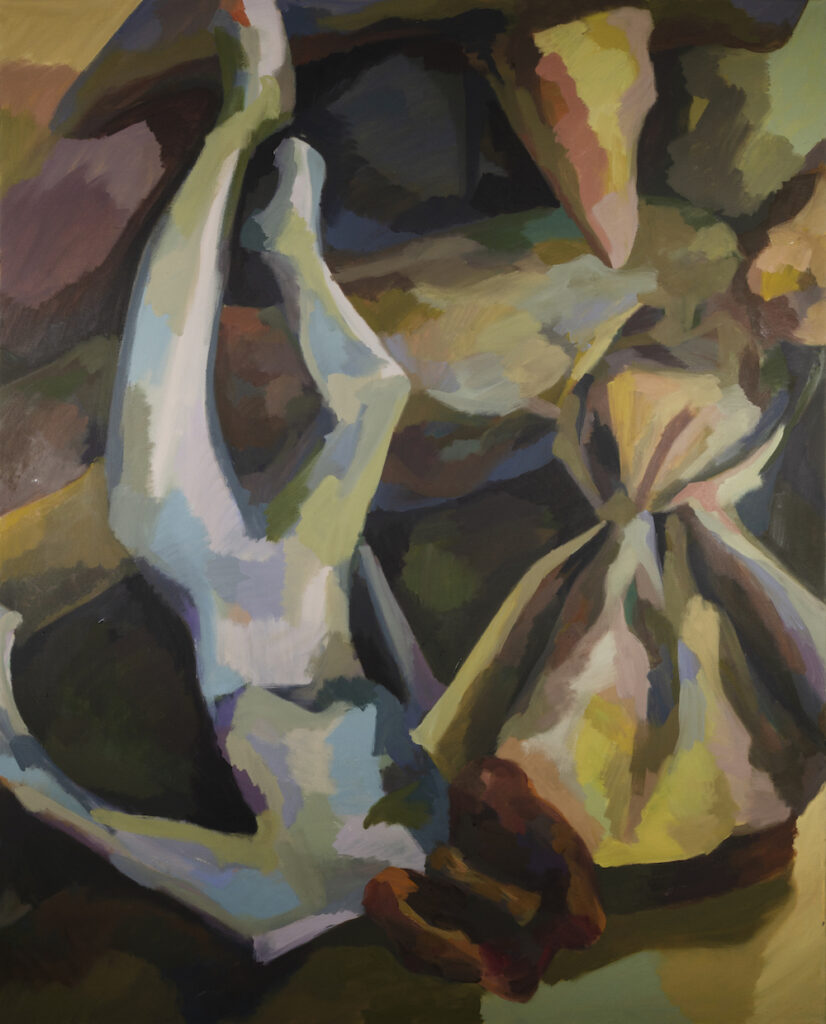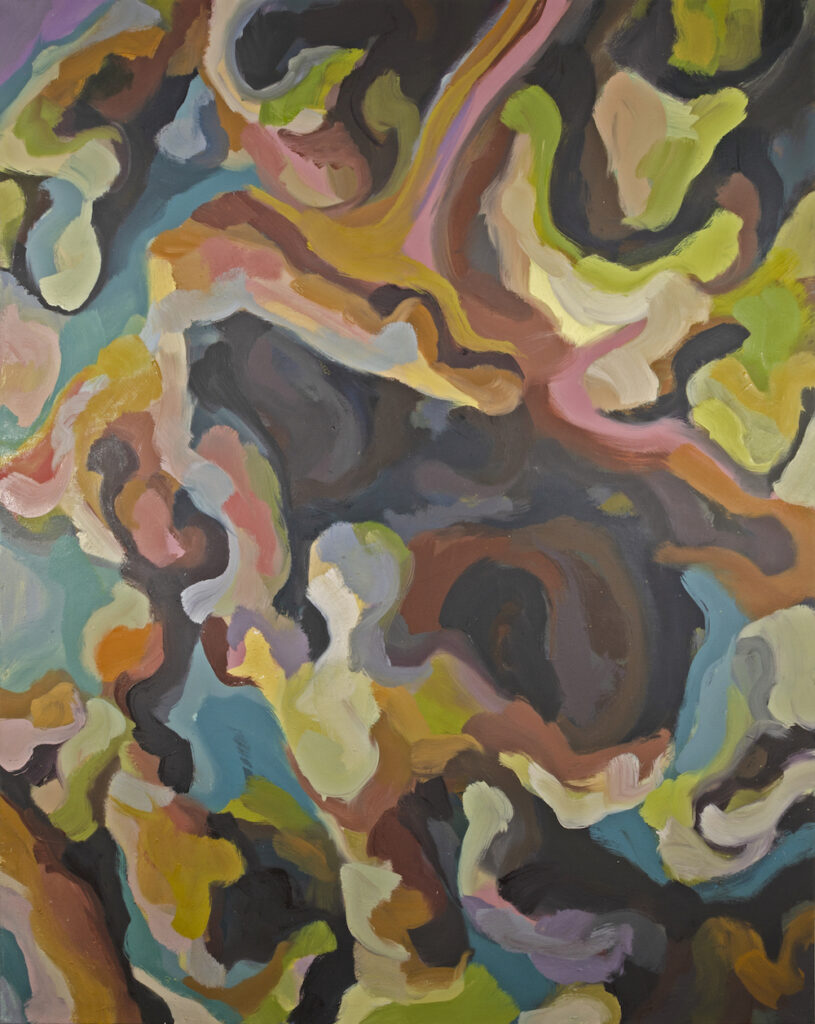Emma Stine
About Emma
—— Painting
As a result of the odd situation we all are in this year, I have turned my art practice inward, focusing on self-portraiture and documentation of those closest to me. To avoid bringing a live model into my studio, I began making tiny sculptures of myself to use as subjects. I focused on giving the interactions between these figures a sense of grandeur through rich colors and large-scale compositions, generating tension through the contrast of translating details of the small sculptures into large works. Creating figures gives me control over the exact forms from which I can paint; while they are by definition, a still life, they are created to be an illustration of an interior world, one which I want to explore. Recently I have been looking to George Baselitz, Nathalie Djurberg and Alice Neel for inspiration.
The work often starts with a desire to process or understand difficult subjects, either internal or external to me. I sidle up to each project casually to avoid being intimidated, looking for ways I can make myself laugh or be confused.
Watch Emma’s Interview:
Artist’s Statement
The act of creating self-portraiture exposes a vulnerability in me which makes me want to hide in humor; lumpy versions of myself dancing around in my studio captured in small bits of clay make me laugh. Much as Elaine de Kooning used images of sports players as reference material, I took videos of myself exercising, dancing around with props, in my studio. Embracing how ridiculous it feels to begin a painting by doing yoga with a paper mask in front of an iPhone made me optimistic about where the project would end up. Those videos lead to creating settings and dioramas in which clay copies of myself could exist and respond to one another, making a static performance. To me, they symbolize a kind of playing, a record of energy that I don’t know what to do with. The work often starts with a desire to process or understand difficult subjects, either internal or external to me. I sidle up to each project casually to avoid being intimidated, looking for ways I can make myself laugh or be confused. Artists such as Tala Madani and Nathalie Djurberg inspire me to embrace the play that comes along with making art. They both talk about the importance of finding entertainment in their own art practices.
Creating clay figures gives me control over the exact forms from which I can paint; while they are by definition, a still life, they are created to be sketches of an interior world. These sketches, made in a variety of media, are a rehearsal for the painting. If I go into a new painting cold, I overwhelm myself with expectations for the work. Sketching first, either in watercolor or a dry medium, lets me settle into the relationships between light and form, which boundaries are important to maintain, and what my own emotional attachment is to the piece. This part of the process is easier to achieve at this stage because it sidesteps my internal bias to see painting as final. The sketches solidify goals for the works: to look at how patterns can be integrated into chaos, so structure can be found in overlapping forms. I let the figures inform the brushwork for the final paintings, creating movements on the canvas that feel deeply intuitive. The patterns have an orgiastic quality. There is formal technique that must be involved, but as each work takes on a life of its own I begin to have to reckon with it as though it is its own creature. Once I hit that point the real fun begins; I have something to fiddle with, or fight against depending on my mood.
This work certainly has feminist undertones with regards to the role of the artist versus the muse, control over one’s own body, and how sexuality is approached. I enjoy projecting subversive dialogues onto the characters but no single tone is mandatory, or even explicit. The paintings feel inextricably linked to my self image. Everyone, however, forms their own image of who I am through the lens of who they are, an image that will impact what they see in my work. That aspect is the last part of how I define play in my art practice; everyone getting their own little bit out of the work that I put in front of them.

















